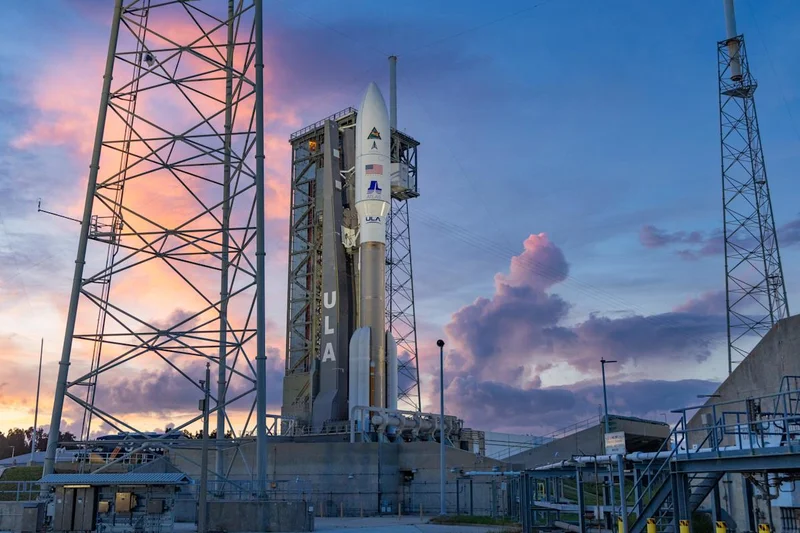XLM Insight | Stellar Lumens News, Price Trends & Guides
XLM Insight | Stellar Lumens News, Price Trends & Guides
Alright, space fans, buckle up! We had a minor setback with the ULA launch of the ViaSat-3 F2 satellite. A valve issue scrubbed the initial launch attempt, but let's not dwell on the momentary pause, because what this satellite promises is simply too important to ignore.
The Atlas V, a workhorse of space launches, was all set to loft the ViaSat-3 F2 into orbit, but as they say, space is hard. An "issue encountered while cycling the booster liquid oxygen tank valve during final checkouts" is the official line. It happens, right? These things are complex machines, and a little hiccup is far better than a major catastrophe. The team is targeting a launch a day later, and honestly, I'm just as excited as ever.
Now, why am I so jazzed about a satellite launch, even one that faced a delay? Because ViaSat-3 F2 isn't just any satellite. It's designed to more than double the bandwidth capacity of Viasat's entire existing fleet! Think about that for a second. We're talking about a quantum leap in connectivity, potentially unlocking access for underserved communities and revolutionizing how we interact with the world.
This bird is carrying some serious tech. Built on Boeing’s 702MP+ platform, it uses electric propulsion and solar arrays from Spectrolab. We're talking about dynamic beamforming capabilities that can efficiently deploy bandwidth to the highest-demand places. It’s not just about more bandwidth, it's about smarter bandwidth. This is the kind of tech that makes me remember why I got into this field in the first place.
Here's the Big Idea: Imagine a world where reliable, high-speed internet isn't a luxury, but a fundamental right. Where remote communities can access education, healthcare, and economic opportunities with the same ease as someone in a major city. That's the potential ViaSat-3 F2 unlocks. It's a step towards bridging the digital divide and creating a more equitable world, a goal that's always been at the heart of technological progress, isn't it?
The first satellite in the ViaSat-3 series, ViaSat-3 F1, suffered an antenna issue, which delayed its start of service and reduced capacity. It's like hitting a pothole on the road, but it doesn't mean we should stop driving, right? Viasat is clearly learning from the experience and pushing forward!
I saw someone on Reddit comment about the launch, saying, "Another step closer to ubiquitous internet! Can't wait to see the impact this has on rural communities." That’s the kind of enthusiasm that gets me going. It's not just about the tech; it's about the human impact.

Of course, with great power comes great responsibility. As we expand connectivity, we also need to address issues like cybersecurity, data privacy, and digital literacy. It's crucial that we use this technology to empower individuals and communities, not to exploit them.
The Atlas V rocket itself is a beast, standing at 196 feet tall and generating 2.7 million pounds of thrust at liftoff – that's one powerful firework! This particular mission uses the 551 configuration, meaning it's packing five solid rocket boosters for an extra kick. It's a complex dance of engineering, and I'm always in awe of the precision and dedication of the teams that make these launches happen. More information about the rocket and mission can be found at Atlas V ViaSat-3 F2.
The satellite is slated to enter service in early 2026, following months of on-orbit testing. It will operate in geostationary orbit, beaming down Ka-band network capabilities to the Americas. We're talking about adding more than 1 terabit per second of capacity to the network. The speed of this is just staggering—it means the gap between today and tomorrow is closing faster than we can even comprehend.
As Mark Dankberg, Chairman and CEO of Viasat, said, "Beyond an incredible capacity increase, ViaSat-3 F2’s dynamic beam forming capabilities will greatly benefit our customers by efficiently deploying bandwidth to the highest demand places, allowing us to scale performance and the number and density of users."
This reminds me of the invention of the printing press. Before Gutenberg, knowledge was limited to the elite. The printing press democratized information, empowering individuals and fueling the Renaissance. Similarly, ViaSat-3 F2 has the potential to democratize internet access, empowering communities and fueling a new era of innovation.
The launch was supposed to be visible from Daytona Beach and New Smyrna Beach. I can almost picture the crowds gathering on the beach, craning their necks to witness this incredible event. The anticipation, the roar of the engines, the fiery trail piercing the night sky – it's an experience that connects us to something larger than ourselves.
So, a minor delay? Sure. But the bigger picture is this: we're on the cusp of a new era of global connectivity. ViaSat-3 F2 is a key piece of that puzzle, and I, for one, am incredibly excited to see what the future holds. The path to progress isn't always smooth, but the destination is worth the journey.